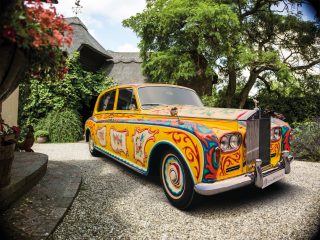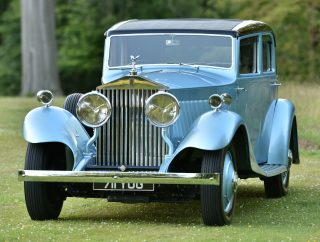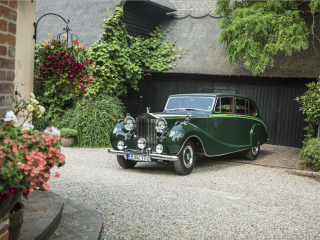#GreatPhantoms#Exhibition#Bonhams#Mayfair#London
ICONS TO JOIN ‘THE GREAT EIGHT PHANTOMS’ EXHIBITION
Phantoms that have been owned by the great and the good will return from around the globe to Rolls-Royce’s spiritual home in Mayfair, London – the global home of luxury – for this never to be repeated event, which will welcome the arrival of the eighth and most modern generation of ‘The Best Car in the World’, the new Phantom.

Rolls-Royce Phantom – ‘The Best Car in the World’
From its debut in 1925, a Rolls-Royce Phantom has stood as witness to history’s most defining moments, from treaty signings to occasions of state and the events that have defined the world we live in today.
The conveyance of choice for the world’s most influential and powerful men and women for 92 years, Phantom has stood as a sentinel, silently witnessing moments as significant as The Beatles collecting their honours at Buckingham Palace, Field-Marshal Montgomery driving Churchill and Eisenhower, and numerous global superstars collecting their Oscars.
Its standing as the longest existing nameplate in the world of motoring is testament to Phantom’s enduring importance to every generation’s leaders, from heads of state to generals, royalty to rock stars, stars of the silver screen to titans of industry.
Rolls-Royce began producing the Phantom I in 1925. The car was developed in great secrecy, with the project code-named Eastern Armoured Car. This suggested Rolls-Royce was intent on producing the kind of military vehicles used in the First World War, most famously by Lawrence of Arabia. Sections of armour plate were left lying around the factory to confuse curious competitors eager to glean the secret of making the ‘best cars in the world’.
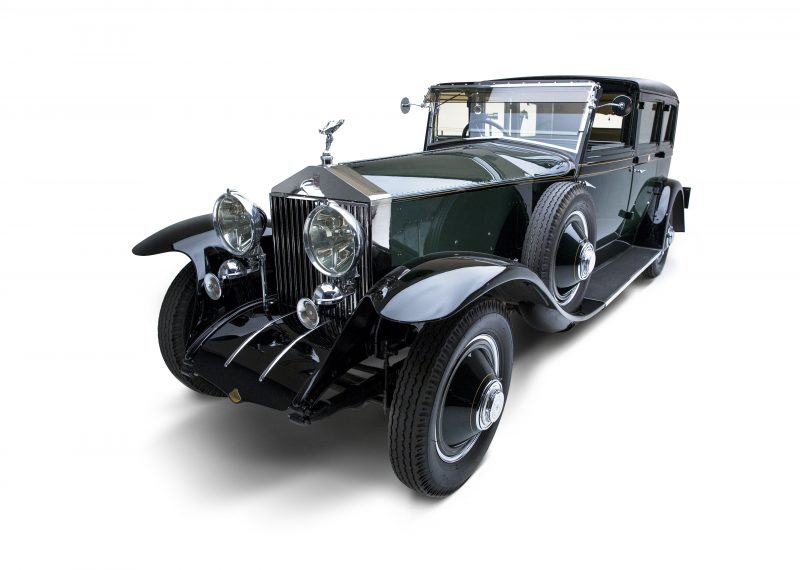
The Phantom I was an instant success. The new 7.668-litre straight-six engine gave the car a fresh spring in its step. When General Motors opened a testing ground in Michigan, it was discovered that no cars could manage even two laps of the 4-mile circuit at full throttle without damaging their engines big ends – where the piston attaches to the crankshaft. However, Phantom I performed with consummate imperiousness and managed that, and more, at a steady 80mph without failure.
Sir Henry Royce’s restless desire to, in his own words, “take the best that exists and make it better” quickly led to the creation of the Phantom II in 1929, this time with a totally new chassis, which significantly improved the handling, as well as a re-designed engine.
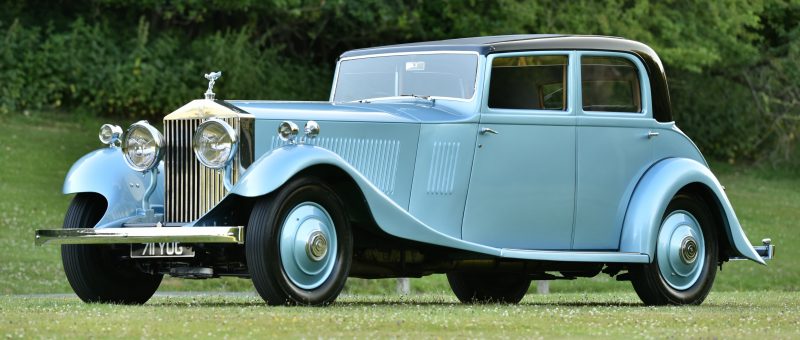
The next Phantom, the third in the line, was to be Sir Henry Royce’s last project. He passed away in 1933, aged 70, about 12 months into the development of this next Phantom. The finished model, with its peerless 12 cylinder engine, was unveiled two years later and production lasted from 1936 until the Second World War. The final chassis was produced in 1941, although the war meant it did not receive its coachwork until 1947. No announcement came about a replacement and it looked as if the Phantom was another victim of the war.
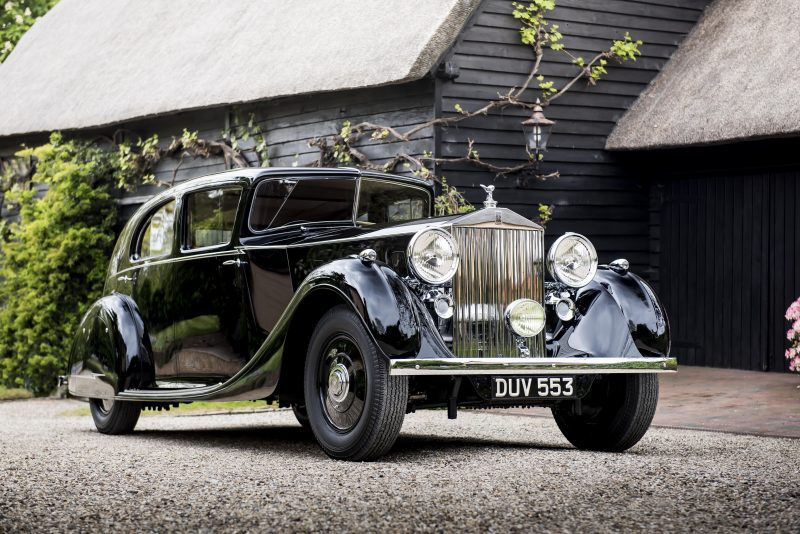
Montgomery Rolls-Royce Phantom 2
Photo: James Lipman / jameslipman.com
In 1950, Phantom IV appeared. The car was originally intended to be a one-off for Prince Philip and the then Princess Elizabeth. However, once seen, a further 17 were exclusively commissioned at the request of other royal families and heads of state around the world. Fitted with a straight-eight engine, it performed superbly at low speeds – essential for taking part in ceremonial parades – and featured the kneeling version of the famous Spirit of Ecstasy bonnet mascot.
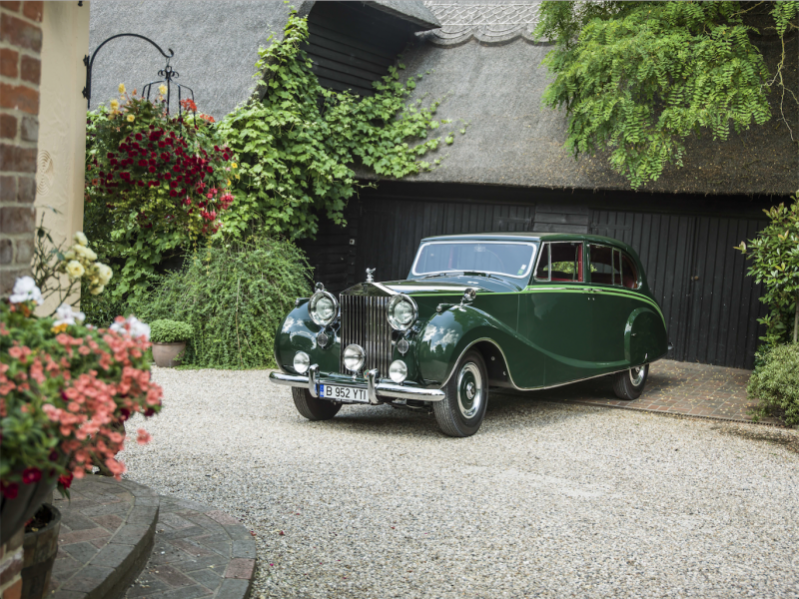
The Phantom V was produced between 1959 and 1968 and 516 of this hugely successful model were made for clients including the Queen Mother, governors of Hong Kong, King Olav of Norway and John Lennon.

The long-running Phantom VI (1968-90) carried on the royal connection, notably with the Silver Jubilee Car, a raised-roof version presented to Queen Elizabeth II in 1977 by the British motor industry to celebrate her 25 years on the throne, and later famously used at the wedding of the Duke and Duchess of Cambridge.

In 2003, a watching world was greeted with Phantom VII, a glowing affirmation of the start of Rolls-Royce’s renaissance at his new home in Goodwood, West Sussex. It was sharply contemporary yet timeless in the manner in which it deftly retained Phantom’s characteristic aesthetic. Built at the Home of Rolls-Royce. an all-new, state-of-the-art centre of excellence, it arrived with a 453bhp 6.75-litre V12 – enough to propel it from 0-62mph in 5.9 seconds – and every possible comfort a new breed of discerning luxury consumer could desire. Exquisite detail right down to the car’s Teflon-coated umbrellas and self-righting wheel-centres, left a curious public in no doubt the marque was in safe hands.
Production of the Phantom VII ceased thirteen years later at the end of 2016.
Exhibits
‘The Great Eight Phantoms’ Exhibition at Bonhams in Mayfair accompanies the presentation of the new Rolls Royce Phantom. The eight great Phantoms that will join the event.
Her Majesty Queen Elizabeth II has graciously assented to her Phantom VI State Limousine being present for the public to see. Also joining the Exhibition are the Phantom IV that belonged to the Aga Khan III –one of 18 such Phantoms built only for Royalty and Heads of State; and the First Goodwood Phantom VII, which began the renaissance of Rolls-Royce on 1 January 2003.
Her Majesty Queen Elizabeth II’s Phantom VI State Limousine
Her Majesty Queen Elizabeth II has graciously assented to her Phantom VI State Limousine being present at ‘The Great Eight Phantoms’ – A Rolls-Royce Exhibition for the British public to see.
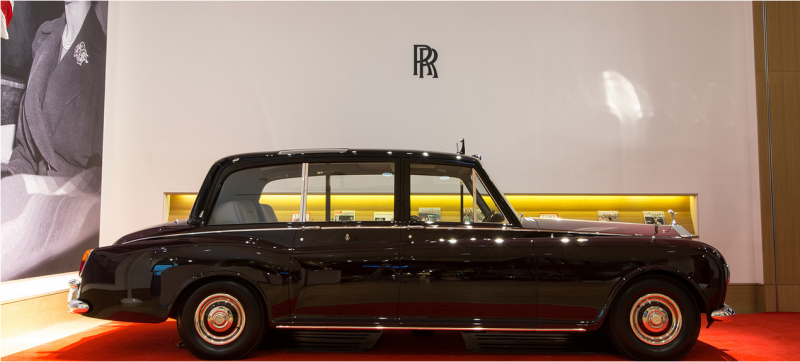
In 1977, to mark her Silver Jubilee, the UK’s Society of Motor Manufacturers and Traders gifted Her Majesty a new official State Limousine, a custom-built Phantom VI.
The most striking aspect of this Park Ward-bodied Phantom VI is its raised roofline, supporting an enormous expanse of toughened glass. It enables Her Majesty, and indeed other members of the Royal family who use the vehicle to see and (more importantly) be seen.
This Phantom, like others in the Royal Fleet, had the ‚Royal mascot‘ of St. George slaying the dragon put in place of the Spirit of Ecstasy when Her Majesty was on board, apart from when she visited Scotland, when a silver lion is used instead. It also had a fitment to hold the Queen’s Shield and the Royal Standard.
As with all the fleet it was finished in Royal Claret and Black Livery and being a state car, it had no need for a number plate.
The Phantom VI was present at another milestone in The Queen’s long reign in 2011. On April 29 of that year Prince William, her grandson, married Kate Middleton. The Duchess of Cambridge and her father were driven to the Abbey in the Phantom VI, taking full advantage of the panoramic glass to give the delighted crowds the best possible view of her last few minutes as Kate Middleton before she transformed into a Princess; a happy ending for both Kate and the splendid Silver Jubilee Phantom VI.
‘The Aga Khan Phantom IV’
The second Royal Phantom to be present at the Exhibition will be that of the Aga Khan III. The Aga Khan III is famous for combining a jetset lifestyle as thoroughbred horse owner with his role as leader of the Nizari Ismaili Muslim community. The Aga Khan was among just 18 heads of state and members of royal families to commission a Rolls-Royce Phantom IV.

Aga Khan III was President of The League of Nations from 1937 to 1938, but also owned five Derby winners and won British flat racing’s Champion Owner title 13 times. He liked the finest things in life and so his choice of a Rolls-Royce Phantom IV was no surprise.

The Hooper coachwork of the Aga Khan’s Phantom IV has remarkable flowing lines, the rear wheels are enclosed and the body is in the Sedanca de Ville style, whilst the interior features sumptuous red leather, using Connolly hides. It took two years to build, from 1950 to 1952, thanks to its many bespoke additions; an adjustable mirror, concealed silver brush, comb and compact – all engraved with the Aga Khan’s royal crest which was also to be seen on the doors – as well as a built-in Dictaphone and a full picnic set.

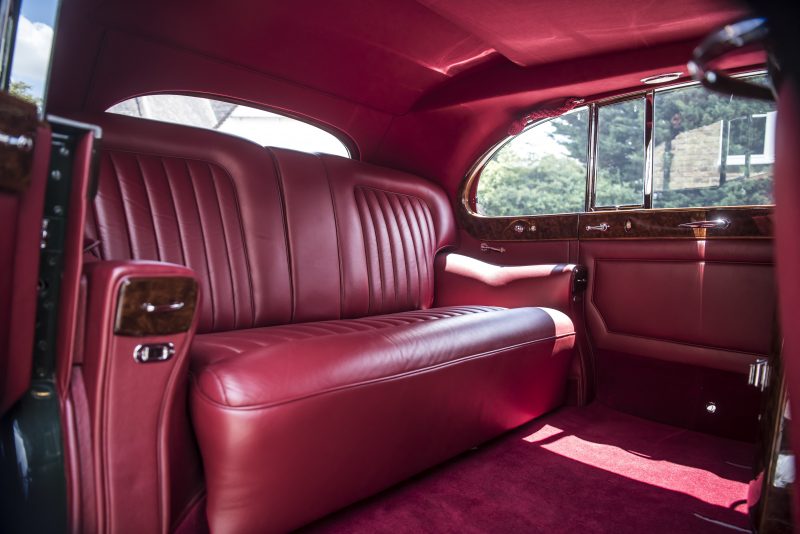
‘The Aga Khan Phantom IV’ has been kindly loaned to ‘The Great Eight Phantoms’ by Mr Ion Tiriac.
‘The Fred Astaire Phantom I’
In the ‚twenties Fred Astaire and his sister Adele entranced theatre audiences in New York and London with their incandescent performances in a string of smash-hit musicals. With ‚Lady be Good‘, which opened in New York in January 1924, they became the biggest musical stars in Broadway’s firmament. In those days the delicious Adele Astaire, witty, elegant, equally at home with slapsick comedy or romantic waltzes, was the big attraction. On stage, Fred was a little overshadowed, but it was his genius which drove their careers forward. Each hit musical was in turn brought to a major theatre in London’s West End.
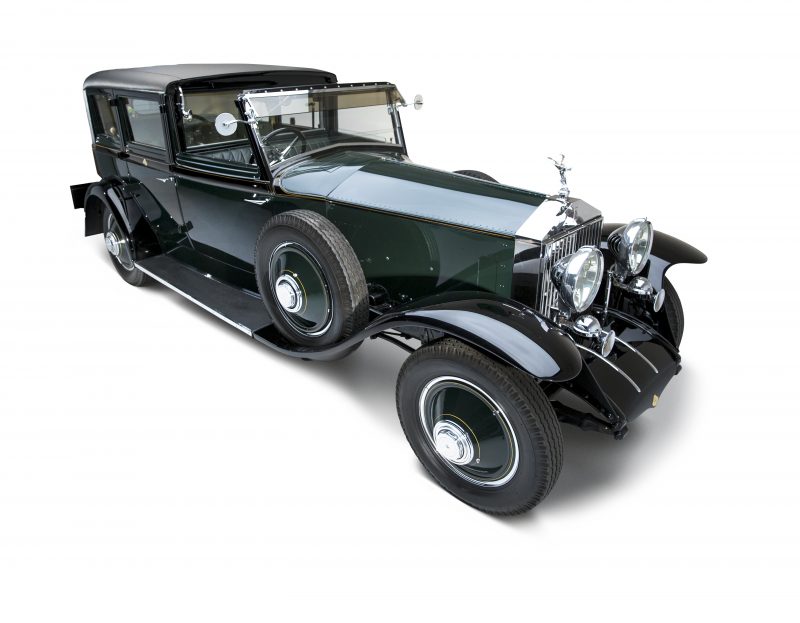
The elegant Astaires were the toast of fashionable society. In 1923, Noel Coward brought Prince George, the Duke of Gloucester, backstage to meet them. They were equally welcome in the drawing rooms of Belgravia during the London season, in the Royal Enclosure at Ascot, or on the grouse moors of the greatest families. Adele gracefully parried the attentions of high-born suitors queuing at the stage door of any theatre in which she appeared. She was often seen modeling the new season’s fashions by Molyneux in the pages of the glossy weeklies. Fred’s casual elegance was influential. His easy double breasted lounge suits, set off by brown suede oxfords, were echoed by His Royal Highness Edward, Prince of Wales.

For the wealthy and well-connected, it was a brilliant time. In London the Astaires took sumptuous suites in the capital’s newest, most exclusive hotel – Grosvenor House on Park Lane. Since his early days in burlesque, Fred had developed a liking for the most luxurious automobiles. By the late twenties he had refined his taste. The clamour of a Stutz or Bentley open sporting car was not for him. He preferred the understated magnificence of an enclosed chauffeur-driven Rolls-Royce to take him to play golf or to the horse races on non-matinee afternoons. It was luxury and it was earned. Back in 1925, during the sensational New York run of ‚Lady Be Good‘, the Astaires were offered $5000 a week to perform at the Trocadero night club in Manhattan after their nightly theatre performance. Adele, who preferred to party after the show, was not enthusiastic – the night club was after all little more than an exotic speakeasy in those prohibition days – but Fred told his friends he wanted the money to buy a new Rolls-Royce.
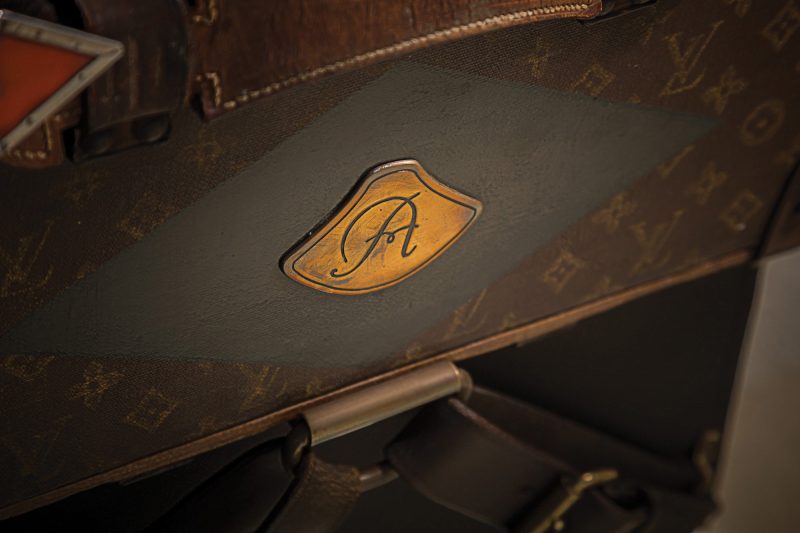
The third consecutive and greatest truimph for the pair was ‚Funny Face‘, which ran for a year in New York before they brought it to London’s West End. It opened at The Prince’s Theatre on 8th November 1928 to ecstatic reviews and excellent advance bookings. A week later, just as soon as he was certain his stay in London would last until at least the following summer, Astaire confirmed his order, for immediate delivery, with Rolls-Royce for this Phantom single cabriolet open drive town car, its Hooper coachwork finished in green and black. An intriguing entry on the order sheets states, ‚charge for heraldry and loose covers to follow to F. Astaire ex-Hooper and Co.‘
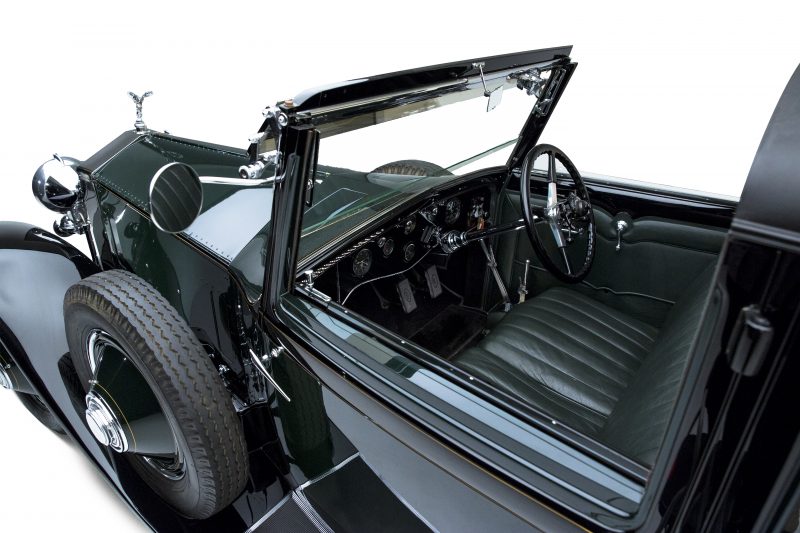
On the final night of ‚Funny Face‘, Prince Aly Khan, himself a Rolls-Royce owner, brought Lord Charles Arthur Cavendish, second son of the ninth Duke of Devonshire, to pay court to Adele. She and Charles were later married in the private chapel at Chatsworth House in 1932.
At the end of the ‚Funny Face‘ season, Fred Astaire returned to New York, taking his Phantom with him. His liking for the Derby marque was enduring, and by 1932, very much the eligible bachelor about Manhattan, he was, according to one New York society reporter, regularly seen being driven around in a $22,000 Rolls-Royce, which is loaned to the Exhibition by its owner, the Petersen Museum in Los Angeles.
‘SIR MALCOLM CAMPBELL’S PHANTOM II’
Need for speed: Sir Malcolm Campbell’s Phantom II
At the height of his pursuit of a new land speed record in the 1930’s, Sir Malcolm Campbell began a relationship with Rolls-Royce that would take him to glory and help him celebrate it.

At the end of 1932 Campbell had won prestigious Grand Prix races, broken the land speed world record not once but six times, and had been knighted by King George V. He had nothing left to prove. He was the fastest man on land and yet, as restless as ever, he wanted to take a crack at the 300mph barrier, the automotive equivalent of the four-minute mile. He believed that the only engine that could power his Blue Bird to this speed was a 36.5L Rolls-Royce R aero engine, which generated a staggering 2,300 horsepower.
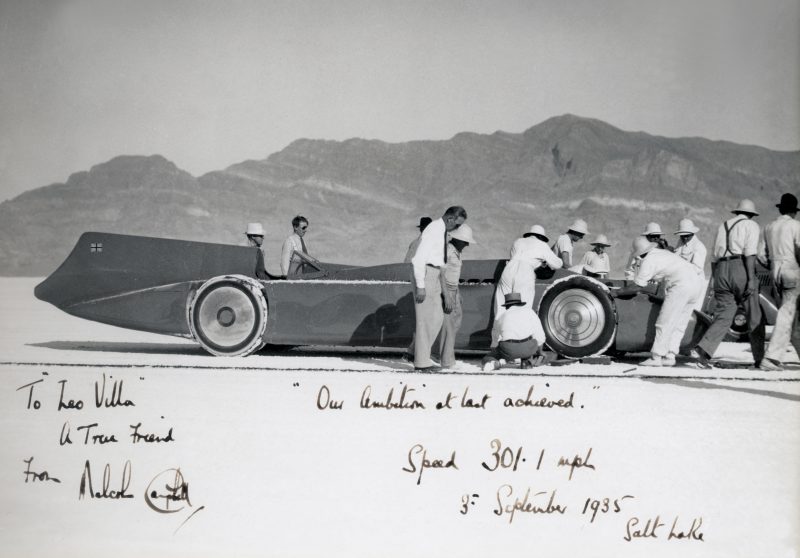
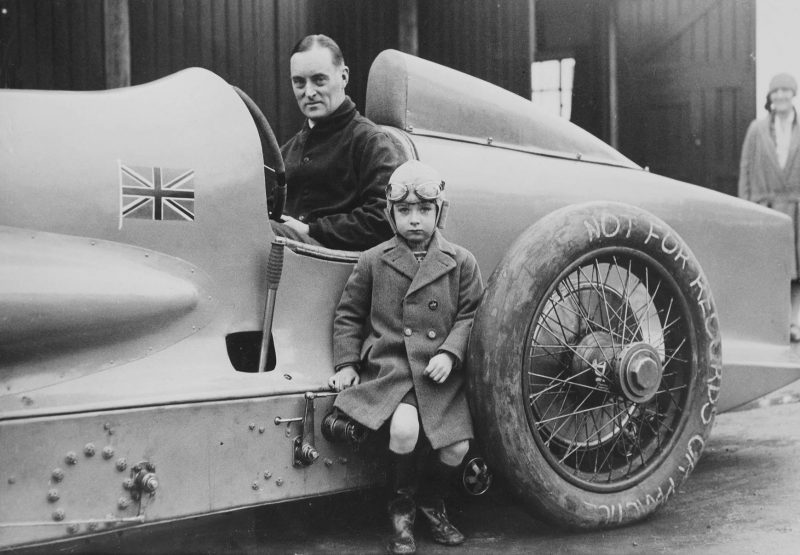
On 22 February 1933, Blue Bird’s first run with the Rolls-Royce engine set a new world land speed record of 272 miles per hour (438 km/h) at Daytona Beach, Florida. A month later, Campbell celebrated by taking personal delivery of a new Phantom II Continental, registration AGO 1.
The short-wheelbase Continental had been introduced in 1930 as a ‘sportier’ version of the Phantom II, which had debuted a year earlier. The Continental, with its improved balance and springing, was capable of 95mph – modest by Campbell’s standards, but positively head-spinning for a car weighing almost two and a half tons.
The Motor magazine commented that the Phantom II Continental was ‚Powerful, docile, delightfully easy to control and a thoroughbred, it behaves in a manner which is difficult to convey without seeming to over-praise.”
Although AGO 1 was bodied by coachbuilders Barker as a ’standardised touring saloon‘, there were some Bespoke modifications ordered by Campbell. These included a wireless set, fire extinguisher, spotlight, an exhaust pipe specified as nine-inches longer than the norm (probably to create an exhaust note closer to the Blue Bird’s roar), a klaxon horn, a Bosch horn and a siren. Clearly this king of speed wanted people to know he was coming through! Even on public roads, Campbell’s fondness for going fast was well known.

And the colour? Pale blue, of course, with darker blue leather trim and a black roof. The pearlescent glow of the bodywork was apparently achieved by Rolls-Royce’s use of ground herring scales in the paint. Campbell must have been pleased, for he penned a promotional brochure for the Phantom II entitled ‘The best Rolls-Royce yet produced,’

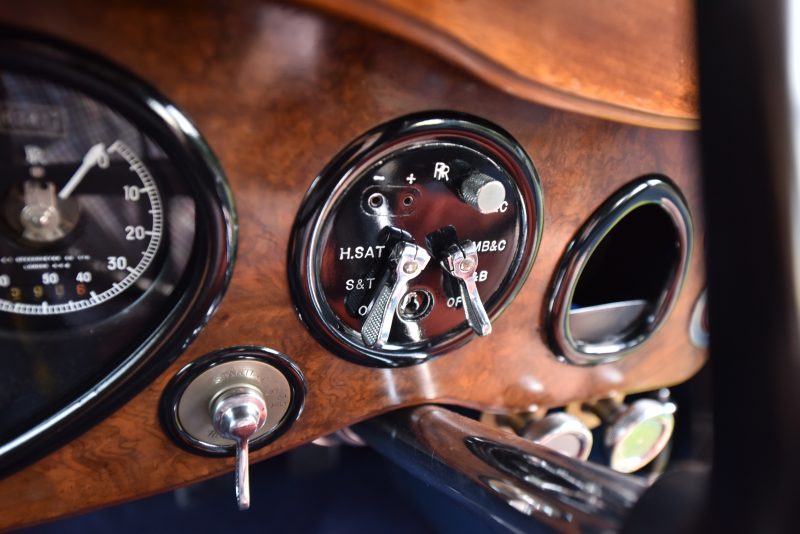
Monty’s Triple
Although Field Marshal Bernard Law Montgomery, 1st Viscount Montgomery of Alamein was nicknamed the Spartan General due to his ascetic lifestyle, there was one area in which he demanded the very best – his personal transport. And his preference was for Rolls-Royce.

Montgomery Rolls-Royce Phantom 2
Photo: James Lipman / jameslipman.com
During World War Two, the Field Marshal had the use of three Rolls-Royce Phantom IIIs.
The first of the Phantoms, a 1936 model coachbuilt by Freestone & Webb, was owned by the head of English Talbot Motor Company, Frederick Wilcock, before being requisitioned by the Ministry of War Transport Section. Montgomery used it as his personal transport in the run up to D-Day, and ferried Winston Churchill, General Eisenhower and King George VI to D-Day planning sessions at his base in Southwick House, Hampshire.A keen believer in the power of the image, Montgomery used his Rolls-Royce Phantom to communicate permanence, solidity and reliability – a signal to his men that he was there to stay.
But it is the ‘Butler’ Phantom III, which will be present at the Exhibition in London, which proved to be Montgomery’s favourite. This particular Phantom was commissioned for Alan Samuel Butler, Chairman of the De Havilland Aircraft Company, with bodywork by HJ Mulliner of Chiswick. Its most striking feature was a front-sloping windscreen that made the car 15 per cent more aerodynamically efficient than the standard configuration. The motor car’s slippery nature was also helped by the enclosed spare tyre and swept tail.
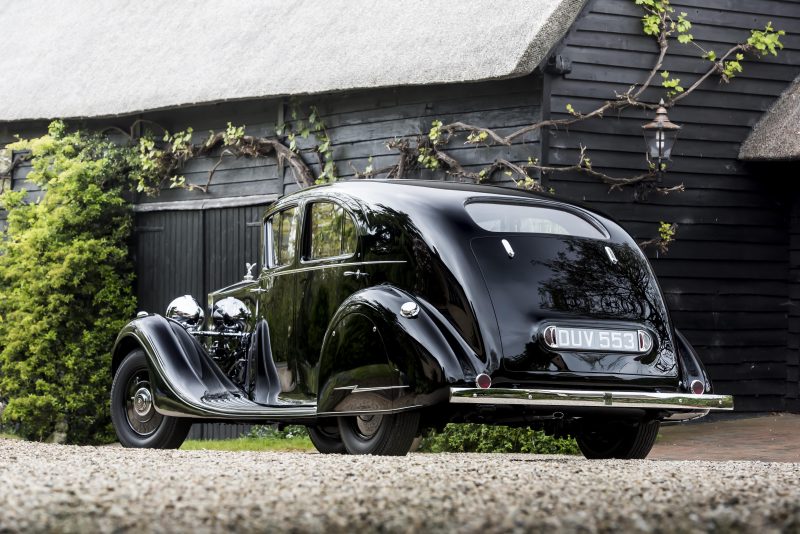
Montgomery Rolls-Royce Phantom 2
Photo: James Lipman / jameslipman.com
The ‘Butler’ Phantom III was Montgomery’s main official mode of transport for many years visiting such eminent addresses as 10 Downing Street, the War Office on Whitehall, the British Prime Minister’s country residence Chequers, and military operations centres such as Northwood in Hertfordshire and the NATO Supreme Headquarters Allied Powers-Europe in Rocquencourt, near Versailles, France.
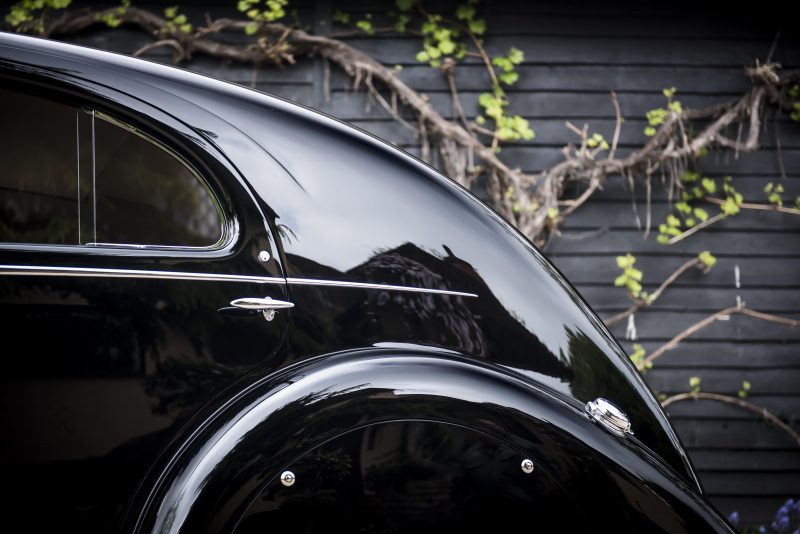
Montgomery Rolls-Royce Phantom 2
Photo: James Lipman / jameslipman.com
The Field Marshal kept the ‚Butler‘ Phantom until 1962, by which time it had also carried the Prime Ministers of Canada, Australia and New Zealand, as well as taking Monty around the UK to historic meetings, inspections and celebrations.
The ‘Butler’ Phantom III has recently undergone extensive refurbishment at Rolls-Royce specialist P&A Wood in Essex, England.
‘The Great Eight Phantoms’ Exhibition will be the first and only opportunity for members of the public to see this amazing Rolls-Royce before it attends the Pebble Beach Concours d’Elegance in the United States in August, after which it will return to its current owner’s private collection.
‘The John Lennon Phantom V’
On 3 June 1965 – the same day that Edward H White left the capsule of his Gemini 4 to become the first American to walk in space – John Lennon took delivery of something rather special. It was a Rolls-Royce Phantom V in Valentine Black. He would later say that he always wanted to be an eccentric millionaire, and the Phantom would become an important step towards that dream.

Lennon had the Phantom V customised in true rock-star style. The rear seat was converted to a double bed, a television, telephone and refrigerator were installed, along with a ‚floating‘ record player and a custom sound system (which included an external loud hailer).
Then, in April 1967, just as the recording of the game-changing Sgt. Pepper’s Lonely Hearts Club Band was finishing, Lennon asked Surrey coachbuilders, JP Fallon, to give the Phantom a new paint job. The freshly-painted Phantom was unveiled days before the worldwide release of Sgt. Pepper’s on 1 June and it seemed part of the overall concept of the album.
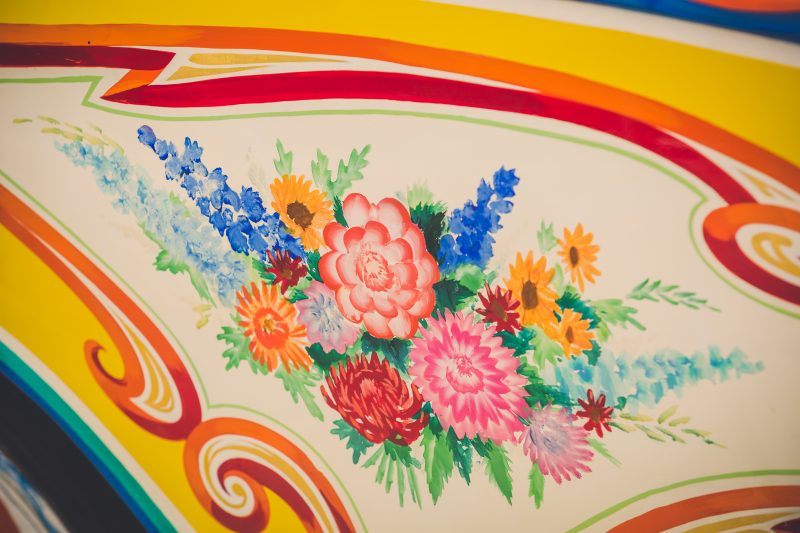
The new colour scheme is often described as ‚psychedelic‘ and certainly the colours, particularly the dominant yellow, reflected the cover of Sgt. Pepper’s Lonely Hearts Club Band. But look carefully and you will see it is no random swirl, but a floral Romany scroll design, as used on gypsy caravans and canal barges, with a zodiac symbol on the roof.
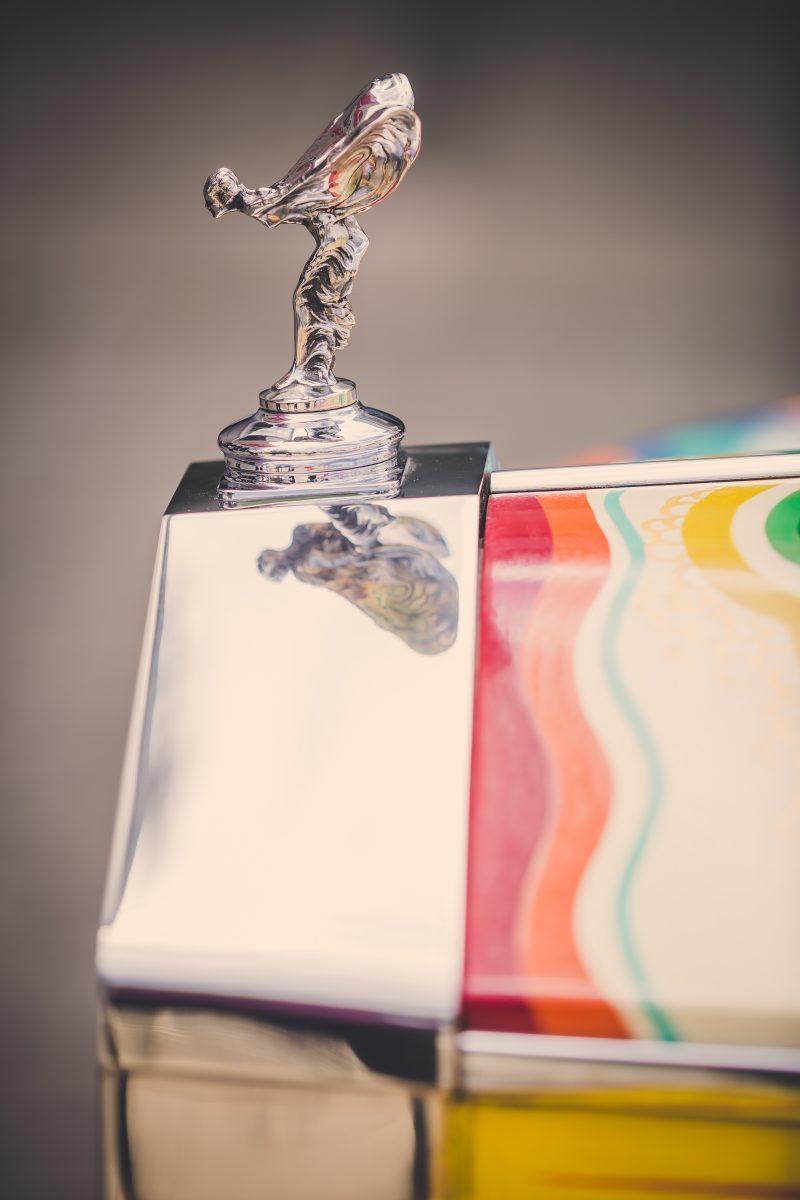
The Phantom V was used regularly by Lennon until 1969 (Lennon also owned a slightly less conspicuous all-white Phantom V). Having used it, pre-paint change, to collect his MBE with his bandmates in 1965, he then used it again in 1969 to return his MBE to the Palace, in protest against, among other things, the Vietnam War. The car was shipped to the USA in 1970 when Lennon moved there and was loaned out to ferry other rock stars around such as The Rolling Stones, Bob Dylan and The Moody Blues. In 1977, after a period in storage, it was donated by billionaire Jim Pattison to the Royal British Columbia Museum in Victoria, British Columbia, Canada.
The First Goodwood Phantom – Phantom VII
The First Goodwood Phantom is the motor car that began the renaissance of Rolls-Royce in 2003. Known at the time as “the last great adventure in automotive history”, this renaissance has seen Rolls-Royce retake its rightful place as the world’s leading luxury brand with highly progressive models beginning with Phantom, then Ghost, Wraith and Dawn, and the only true luxury approach to satisfying the desires of every individual customer – Bespoke.

Three months after its debut at 00.01 on 1 January 2003, the First Goodwood Phantom was shipped from Southampton, England to Perth, Western Australia for its Australian debut in April 2003. Following that debut, the Phantom was to undertake its first big adventure in the hands of its owner – a 4,500-mile epic drive across Australia. The route left Perth, heading down the coast of Western Australia, across the Nullarbor Plain to Adelaide in South Australia, then into Victoria and along the Great Ocean Road until finally arriving at the Harbour Bridge in Sydney, New South Wales.
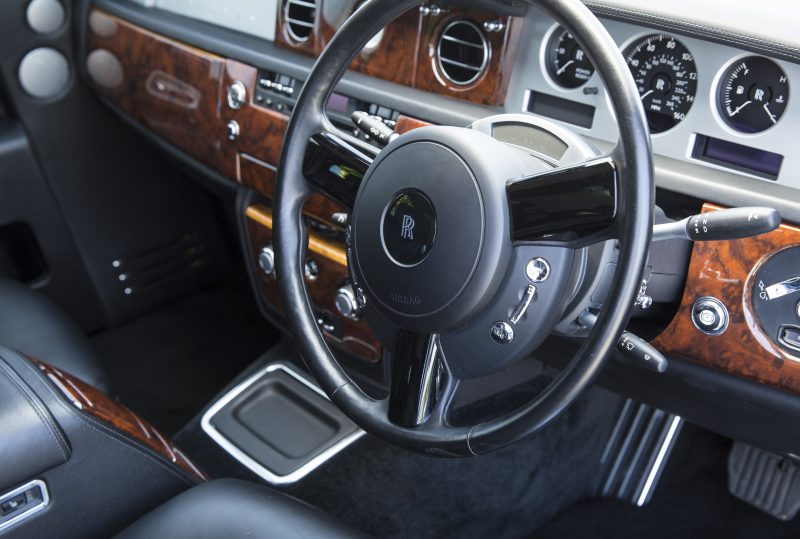
The owner provided daily updates of ‘driver impressions’ to the team back at Goodwood, declaring the new Phantom to be “a Grand Tourer in the truest sense of the words”. The car performed faultlessly, its only issue some sand that had entered the Spirit of Ecstasy retraction mechanism during a dust storm in the Australian desert.
14 years after its creation, this First Goodwood Phantom remains in exceptional condition. It is loaned to ‘The Great Eight Phantoms’ – A Rolls-Royce Exhibition by its owner, the same gentleman who originally commissioned it.
Bonhams
Bonhams and the Rolls-Royce marque have long been entwined, with some of the most historically significant and luxurious models crossing the block at the international auction house’s sales over the years. Indeed, Bonhams hold the world-auction record for the marque with the sale of ‘The Corgi’ 1912 Silver Ghost at £4,705,000 in 2012.
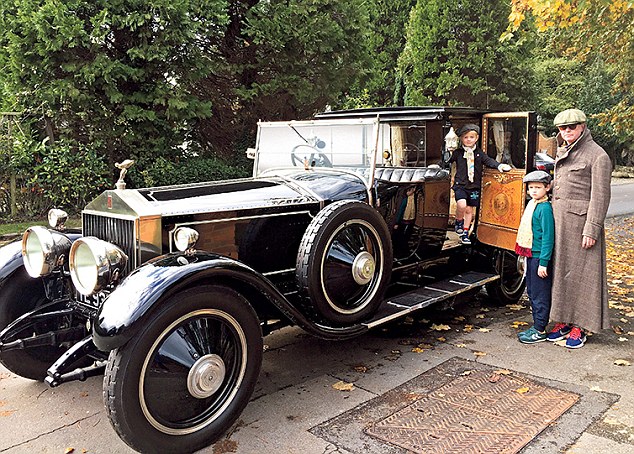
The Silver Ghost was in production until 1925 and replaced by another legendary model, the New Phantom. In December 2016, Bonhams sold one of the most famous Rolls-Royce Phantoms ever built – the 1926 Rolls-Royce Phantom I, nicknamed ‘The Phantom of Love,’ which sold for £561,500 at the Bond Street Sale. Commissioned by Clarence Warren Gasque for his wife Maude, a Woolworth heiress, money was no object. Gasque demanded that the style be French and that the car surpass the luxury of any previous Rolls-Royce sold. He certainly had his way, as the car’s painted ceiling, elegant polished satinwood, drinks cabinet, ormolu clock and self-styled coat of arms affixed to the doors combined to create a vehicle more akin to the throne room of Versailles than a motor car. It is, without doubt, one of the very finest examples of art and craftsmanship applied to an automobile, and encapsulates the elegance and style that has come to embody Rolls-Royce.
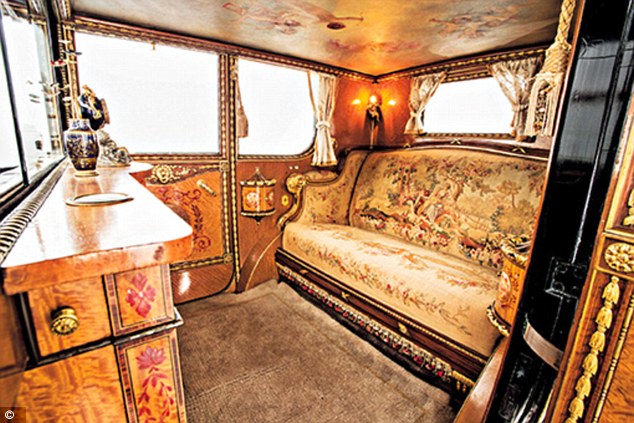
James Knight, Group Motoring Chairman of Bonhams, commented, ‘‘We are delighted to be the venue for this singular celebration of the Rolls-Royce Phantom, as Bonhams has had a long history with Rolls-Royce. Bonhams has sold some of the most astounding Rolls-Royce motor cars ever created, including ‘The Phantom of Love’ sold in London earlier this year, The ex-Marlene Dietrich Phantom I ‘ and the ex-Jack L. Warner Phantom I Transformal Phaeton.”

-Ends-
images Rolls Royce_Bonhams_James Lipman / jameslipman.com

